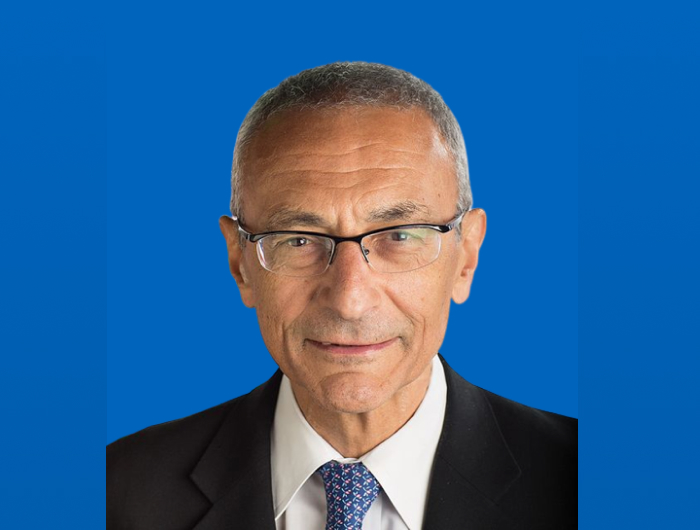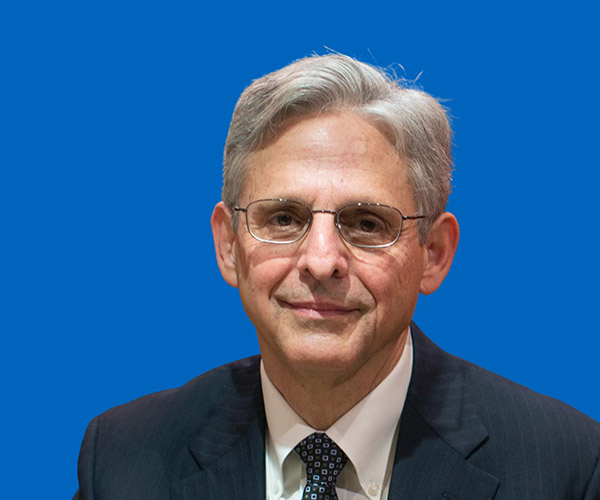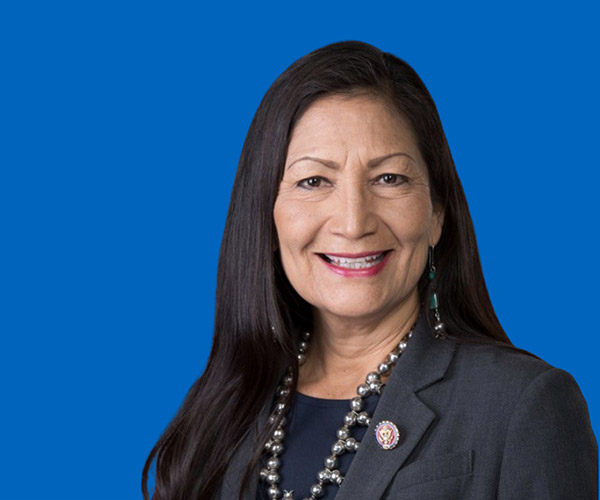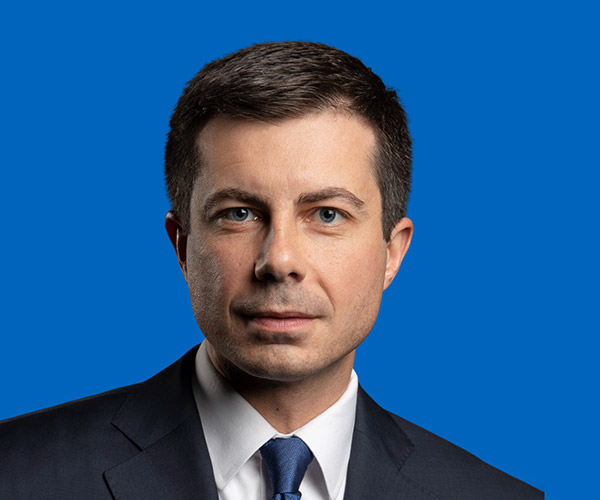President Biden's
Historic Climate Agenda
“This is a case where conscience and convenience cross paths, where dealing with this existential threat to the planet and increasing our economic growth and prosperity are one and the same. When I think of climate change … I think of jobs.”
Take Climate Action in Your Community
President Biden’s Actions to Tackle the Climate Crisis
President Biden campaigned on a bold vision of tackling the climate crisis with the urgency that science demands, by building a clean energy economy that benefits all Americans—with lower costs for families, good-paying jobs for workers, and healthier air and cleaner water for communities. As part of that vision, the President set groundbreaking goals:
- Reducing U.S. greenhouse gas emissions 50-52% below 2005 levels in 2030
- Reaching 100% carbon pollution-free electricity by 2035
- Achieving a net-zero emissions economy by 2050
- Delivering 40% of the benefits from federal investments in climate and clean energy to disadvantaged communities
The Biden-Harris Administration has made massive progress in translating these goals into action and impact on the ground – taking decisive steps to reduce climate pollution; cut energy costs; create good union jobs; increase resilience; advance environmental, economic, and racial justice; improve health; and achieve true energy security. This federal mobilization – building on the leadership of states, Tribal Nations, and local governments – has already spurred historic progress. Under President Biden’s leadership:
- Congress passed the Inflation Reduction Act – the most significant investment in U.S. history to tackle the climate crisis – and the Bipartisan Infrastructure Law. Together, these bills are saving families hundreds of dollars per year on energy bills; creating millions of good-paying jobs for American workers through clean energy manufacturing; strengthening our resilience to extreme weather events; and delivering cleaner air and water for our children and grandchildren.
- The Administration has taken hundreds of executive actions to restore protections for the environment and public health, strengthen pollution standards, advance environmental justice, and protect more than 41 million acres of public lands and waters.
- Companies have announced investments to build more than 580 new clean energy manufacturing facilities from coast to coast – a manufacturing renaissance that is creating tens of thousands of good jobs for workers to forge the wind turbines, solar panels, batteries, and electric vehicles (EVs) we need to support a livable climate and a fairer economy.
- New investments in U.S. clean energy manufacturing, electric vehicles and batteries, and clean power projects have reached over $390 billion during this Administration. Clean energy jobs have grown in every single state, employing more than 3 million Americans across solar, wind, storage, energy efficiency, electric vehicles, and more.
- EV sales have quadrupled and the U.S. achieved the milestone of 1 million annual EV sales 3 years earlier than forecasters anticipated. The number of public EV chargers has increased by more than 70% to over 175,000. Companies have announced enough new battery manufacturing capacity in the United States to supply as many as 13 million EVs per year by 2030.
This is the decisive decade for the world to confront climate change and avoid the worst, irreversible impacts of this crisis. President Biden will continue leading to meet this moment and deliver economic opportunities, health benefits, and household savings here at home.
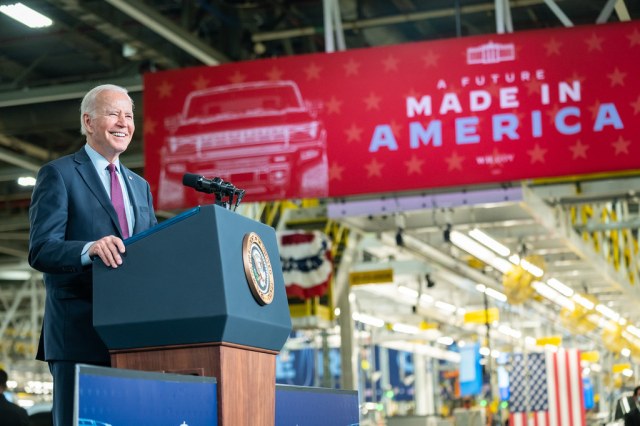
President Biden’s
Leadership in Action
Through executive actions, legislative wins, public-private partnerships, international diplomacy, and more, President Biden is working towards achieving his bold goals while taking steps to grow the economy, create jobs, and build a clean energy future – all while rallying the world to step up, too.
Reducing Emissions and Accelerating Clean Energy
President Biden and Vice President Harris have mobilized a whole-of-government effort in every sector of the economy – taking actions that will reduce greenhouse gas emissions, accelerate clean energy production and deployment, create good-paying jobs, strengthen our economy, and invest in communities that once powered America’s competitiveness.
- Secured historic clean power investments, including Inflation Reduction Act tax credits that will more than double wind, solar, and battery storage deployment; targeted support for clean electricity across rural America; and billions from the Bipartisan Infrastructure Law for grid upgrades and transmission buildout and for accelerating market adoption of clean energy technologies.
- Launched the American offshore wind industry, taking action to approve the nation’s first large-scale projects, lease new wind energy areas along each coast, and create good-paying union jobs across manufacturing, shipbuilding, and construction – attracting over $16 billion in offshore wind investment and making progress toward the President’s goal of deploying 30 gigawatts of offshore wind by 2030.
- Fast-tracked clean energy projects to bring jobs and savings to communities, surpassing the permitting milestone of 25 gigawatts of projects approved on public lands – enough to power more than 12 million homes – and providing support for local governments to advance community solar projects, rooftop solar installations, and other distributed energy resources in disadvantaged communities.
- Supported domestic manufacturing of clean energy technologies, by investing billions of dollars under the Inflation Reduction Act and invoking the Defense Production Act to make solar panels, critical electric grid components, heat pumps, and more in America.
- Accelerated innovation by creating an Energy Earthshot Initiative to drive clean energy breakthroughs and dramatically reduce the cost of critical technologies, including long-duration storage, clean hydrogen, enhanced geothermal systems, and floating offshore wind.
- Advanced smart rulemaking, including finalizing a “Good Neighbor Plan” rule to cut cross-state smog, and proposing rules to reduce greenhouse gas emissions, air toxics, and water pollution from power plants.
- Rallied automakers and autoworkers around an electric transportation future, setting a national target of at least 50% electric vehicle sales share in 2030 and spurring investments in new American factories to manufacture EVs, batteries, and chargers.
- Secured the largest investment ever in public transportation, passenger rail, EV charging, and battery supply chains through the Bipartisan Infrastructure Law, along with Inflation Reduction Act tax credits for new and used EVs, clean fuels, and EV chargers.
- Released a National Blueprint for Transportation to enable agencies to accelerate the nation’s affordable and equitable clean transportation future.
- Launched the EV Charging Action Plan to build out a national charging network that is convenient, reliable, and equitable; approved deployment plans for all 50 states, D.C., and Puerto Rico ahead of schedule; and paired plans with billions of dollars in enabling grants.
- Finalized the strongest vehicle emission standards in American history for both passenger cars and heavy-duty trucks, and increased average fuel economy standards to 49 miles per gallon, to protect communities from pollution and save drivers money at the pump.
- Accelerated clean buses, trucks, and ports with Vice President Harris announcing actions to reduce pollution from heavy-duty transportation and invest in electric vehicle models for public transit, school bus fleets, freight and port operations – providing relief to fenceline communities who bear the brunt of these dirty emissions.
- Strengthened battery supply chains by invoking the Defense Production Act to support American production of critical minerals and materials such as lithium, while adhering to strong sustainability and community engagement standards, and by reviving the Advanced Technology Vehicles Manufacturing Loan Program to support battery material processing projects.
- Advanced the future of American aviation, harnessing leadership and innovation across the federal government, aircraft manufacturers, airlines, fuel producers, and more to produce three billion gallons of sustainable fuel and reduce aviation emissions by 20% in 2030.
- Launched the Affordable Home Energy Earthshot to reduce the cost of decarbonizing housing by 50% within a decade, help Americans save on energy bills, and address persistent burdens faced by low-income households.
- Invoked the Defense Production Act using emergency authority to award $169M to expand domestic manufacturing of heat pumps.
- Updated dozens of energy efficiency standards for appliances and equipment—including through efficiency improvements to air conditioners, furnaces, light bulbs, and more—to provide $1 trillion in consumer savings over 30 years and cut 2.5 billion tons of emissions through standards completed in this term.
- Invested in school facility upgrades with Vice President Harris announcing a new Biden-Harris Action Plan for Building Better School Infrastructure to support energy efficiency retrofits and other improvements that save school districts money and deliver health and education benefits to students, educators and school staff.
- Continued to lead by example as the largest building owner and manager in the country by advancing the President’s goal of a zero emissions federal building portfolio by 2045 and a 50% reduction by 2032. Announced $1 billion to electrify federal buildings and expanded the US-led international Net-Zero Government Initiative to 30 countries committed to achieving net-zero government emissions by 2050.
- Received commitments from 25 governors representing approximately 60% of the U.S. economy and 55% of the U.S. population, to eliminate emissions from buildings, including collectively quadrupling heat pump installations by the end of the decade.
- Secured more than $50 billion to cut industrial emissions and expand clean manufacturing, including billions for clean hydrogen hubs and clean hydrogen innovation in the Bipartisan Infrastructure Law; new tax credits in the Inflation Reduction Act to spur a groundswell of solar, wind, battery, and critical material manufacturing while building a new clean hydrogen industry; new grants for transformative, emissions-cutting technologies to revitalize manufacturing of steel, aluminum, cement, and other essential materials; and loans to support industrial transformation for the clean energy economy.
- Advanced clean domestic manufacturing, with new trade commitments to reward American manufacturers of clean steel and aluminum, a landmark Buy Clean Initiative that leverages federal purchasing to boost demand for low-emissions construction materials, use of the Defense Production Act to spur clean technology manufacturing, the first comprehensive U.S. government plan to build an Energy Sector Industrial Base, Energy Earthshots to accelerate clean manufacturing innovations, and an Industrial Decarbonization Roadmap.
- Delivered on the U.S. Methane Emissions Reduction Action Plan, with agencies across the administration taking nearly 100 actions in 2023 alone to cut methane emissions from the oil and gas sector, abandoned coal mines, landfills, agriculture, buildings, industry, and more, while protecting public health, promoting U.S. innovation in new technologies, and helping employ thousands of skilled workers across the country.
- Launched the phasedown of super-polluting hydrofluorocarbons found in refrigerators, air conditioners, and other equipment, with actions from across agencies to reduce HFC emissions by 85% over 15 years – including a 40% reduction starting in 2024 – while strengthening domestic manufacturing of alternatives.
- Promoted responsible deployment of Carbon Capture, Utilization, and Sequestration (CCUS) technologies, with guidance to help agencies ensure projects are environmentally sound, create good union jobs, and reduce cumulative pollution in nearby communities.
- Secured historic investments to enlist nature in the fight against climate change, with over $40 billion in the Inflation Reduction Act to support climate-smart agriculture, forestry, and rural development and Bipartisan Infrastructure Law support for ecosystem restoration.
- Launched the America the Beautiful challenge to conserve 30 percent of U.S. lands and waters by 2030 by accelerating locally led conservation and leveraging $1 billion in public and private investments.
- Issued an Executive Order on strengthening America’s forests, including by safeguarding mature and old-growth forests on federal lands and supporting reforestation partnerships.
- Restored and strengthened protections for cherished places, including Bears Ears, Grand Staircase-Escalante, and Northeast Canyons and Seamounts National Monuments, as well as the Tongass National Forest and Bristol Bay in Alaska, Castner Range in Texas, Avi Kwa Ame in Nevada, and Baaj Nwaavjo I’tah Kukveni in Arizona.
- Protected sensitive areas from oil, gas, and hardrock mineral leasing, including the Arctic National Wildlife Refuge, other public lands in Alaska, Chaco Canyon, and Boundary Waters watershed. Issued final rules to strengthen public protections across onshore and offshore oil and gas operations, including holding companies accountable for decommissioning costs.
- Issued a final Public Lands Rule to help conserve wildlife habitat, restore places impacted by wildfire and drought, expand outdoor recreation, and guide thoughtful development
- Supported climate-smart agriculture projects anticipated to reach 80,000 farms and 75 million acres of working land, through a $3 billion commitment to create new market opportunities for commodities produced using climate-smart practices.
- Announced actions to protect America’s waterways by re-establishing regulations and joining global effort to ensure environmental protections for water bodies that are critical to the health, safety and economic vitality of communities.
- Issued a Presidential Memorandum on restoring healthy and abundant salmon and steelhead to the Columbia River Basin, and then signed historic agreements with Tribal Nations in both the Upper Basin and Lower Basin to support Tribal Treaty obligations and begin a path toward salmon and steelhead restoration.
Advancing Environmental Justice & Empowering Workers
Since Day One, President Biden and Vice President Harris have worked to confront environmental injustices, toxic pollution, underinvestment in infrastructure and critical services, and disproportionate impacts from climate change on communities across the nation. The Administration has activated the entire federal government to advance environmental justice and for the first time in our nation’s history elevate the voices, perspectives, and lived experiences of environmental justice communities to guide White House and Federal Government priorities, policies, investments, and decision-making.
The Biden-Harris Administration is committed to continually fighting for environmental justice through early, meaningful, and sustained partnership with communities and dedicated leadership in Federal agencies – as reinforced through the President’s Executive Order on Revitalizing Our Nation’s Commitment to Environmental Justice for All.
- Secured historic environmental justice investments, including new grant programs in the Inflation Reduction Act and Bipartisan Infrastructure Law investments to clean up pollution, cap tens of thousands of orphan oil and gas wells, reclaim abandoned mine lands, and replace lead pipes. The EPA’s $27 billion Greenhouse Gas Reduction Fund mobilizes financing and leverages private capital to further curb emissions and create benefits for disadvantaged communities.
- Launched and implemented the Justice40 Initiative to deliver 40 percent of the overall benefits of federal climate, clean energy, housing, clean water, and other investments to disadvantaged communities. Released guidance to help agencies transform hundreds of programs, a new Climate and Economic Justice Screening Tool to ensure that agencies are consistently identifying and delivering benefits to disadvantaged communities, and an Environmental Justice Scorecard to track Federal agency progress on environmental justice, including on Justice40.
- Helped families save on energy costs by doubling funding for the Low Income Home Energy Assistance Program, accelerating home efficiency and electrification retrofits, and supporting locally-driven clean energy plans to lower utility bills.
- Protected public health with actions to reduce harmful PFAS exposure, deliver clean drinking water and replace lead pipes, stop usage of the chlorpyrifos pesticide that threatens farmworkers and children, and reduce toxic exposure from chemical plants and other hotspots.
- Established the first-ever White House Environmental Justice Advisory Council to ensure that voices of historically marginalized, underserved, and overburdened communities are heard in the White House and reflected in the policies and investments of federal agencies.
- Created new environmental justice initiatives across the federal government, including a comprehensive DOJ and EPA enforcement strategy to protect overburdened communities and hold polluters accountable, the first-ever Office of Environmental Justice at DOJ, the first-ever Office of Climate Change and Health Equity at HHS, agency Equity Action Plans that advance environmental justice, and more.
- Formed an Interagency Working Group on Coal and Power Plant Communities and Economic Revitalization to help identify and mobilize over $200 billion in federal funding opportunities that can be used to reduce pollution, support new industries, and create good-paying jobs.
Strengthening Climate Resilience
As climate-related extreme weather events increase in frequency and ferocity, the Biden-Harris Administration is taking bold steps to strengthen the nation’s resilience to severe impacts climate change has on our communities, infrastructure, economies, and more.
- Secured over $50 billion in resilience investments through the Inflation Reduction Act and Bipartisan Infrastructure Law, the most funding in American history to strengthen our nation’s resilience.
- Released the National Climate Resilience Framework to align federal resilience investments and actions, and hosted the first-ever White House Climate Resilience Summit.
- Launched the Climate Mapping for Resilience and Adaptation portal to help officials track climate impacts in real-time and plan for future projections of extreme heat, drought, wildfires, flooding, and more.
- Announced a coordinated federal response for extreme heat by launching nationwide standards and employer training to protect workers from heat exposure on the job, using the Low Income Home Energy Assistance Program to help provide A/C equipment, and more.
- Protected against flooding, superstorms, and sea level rise by re-establishing federal standards that will reduce flood risk, mobilizing new FEMA funding to help communities prepare, and launching interagency efforts on coastal restoration and nature-based solutions.
- Confronted growing wildfire threats by strengthening response capacity with more federal firefighters, launching a new Wildland Fire Mitigation and Management Commission, announcing awards to make communities more resilient to wildfires, and releasing action plans from the Forest Service, Department of the Interior, and other agencies.
- Strengthened drought prevention, resilience, and protection providing financial and technical assistance to drought-stricken communities, including in the Western United States, and negotiating historic new agreements to conserve at least 3 million-acre-feet of water in the Colorado River Basin through the end of 2026.
- Launched the National Initiative to Advance Building Codes to help state, local, Tribal, and territorial governments adopt the latest design and construction standards that save lives and reduce property damage from extreme weather.
- Finalized strong rules to protect communities from climate disasters, including from chemical accidents and hazardous substance discharges, and by providing survivors with faster and easier access to the resources they need.
Leveraging Domestic Action to Rally Global Ambition and Build Global Resilience
While the U.S. has committed itself to addressing the climate crisis, countries across the globe must also step up, given that more than 85% of global climate pollution comes from beyond our borders. President Biden and his team are rallying the world to take the decisive action needed in this decade to tackle the climate crisis.
- Galvanized other countries at COP28 to commit, for the first time, to transition away from unabated fossil fuels, stop building new unabated coal capacity globally, triple renewable capacity and double global energy efficiency by 2030, and triple nuclear energy globally by 2050.
- Launched a new Clean Energy Supply Chain Collaborative to work with international partners to diversify clean energy supply chains that are critical to a clean and secure energy transition.
- Launched and expanded the Global Methane Pledge, in partnership with the European Union, to reduce the world’s methane emissions 30% from 2020 levels by 2030, with more than 155 countries now signed on.
- Improving the adaptive capacity of 500 million people around the world, through the President’s Emergency Plan for Adaptation and Resilience (PREPARE) by enhancing access to the development and delivery of climate services, mainstreaming and integrating adaptation and resilience into plans and programs, and mobilizing finance and private capital to support adaptation.
- Convened three leader-level meetings of the Major Economies Forum, representing 80% of global GDP and emissions, to press fellow leaders of the world’s largest economies to enhance their ambition, including by launching a new Clean Energy Technologies Demonstration Challenge, Green Shipping Challenge, Global Fertilizer Challenge, and a collective 2030 zero-emission vehicle goal.
- Advancing the U.S. Plan to Conserve Global Forests: Critical Carbon Sinks, including by becoming a world leader in innovative debt-for-nature swaps that have helped countries restructure over $2 billion in debt to unlock hundreds of millions of new financing for nature and climate
- Launched and expanded pathbreaking partnerships with the private sector and other key actors, including the First Movers Coalition, the Greening Government Initiative, the Agriculture Innovation Mission for Climate, and the High-Level Panel for a Sustainable Ocean Economy.
- Advanced the world’s first carbon-based sectoral arrangement on steel and aluminum trade, announcing a commitment to negotiate an arrangement with the European Union that will reward American manufacturers, prevent dirty products from entering U.S. markets, and result in more jobs and lower prices for Americans.
- Mobilizing finance to support countries in reducing emissions and building resilience, including through the first-ever U.S. International Climate Finance Plan, pledging to quadruple U.S. international climate finance, and including these investments in the President’s FY24 Budget
- Launched the Partnership for Global Infrastructure and Investment with G7 and other partners to mobilize hundreds of billions of dollars together with the private sector in sustainable, resilient, infrastructure investment for low- and middle-income countries to advance the goals of the Paris Agreement and PREPARE.
- Rallied G7 leaders to end public finance for overseas unabated coal generation, with historic agreement on a set of new actions to accelerate the global transition and, for the first time in history, alignment across the G7 on long-term and short-term climate goals consistent with keeping the 1.5 degrees Celsius global warming threshold within reach.

